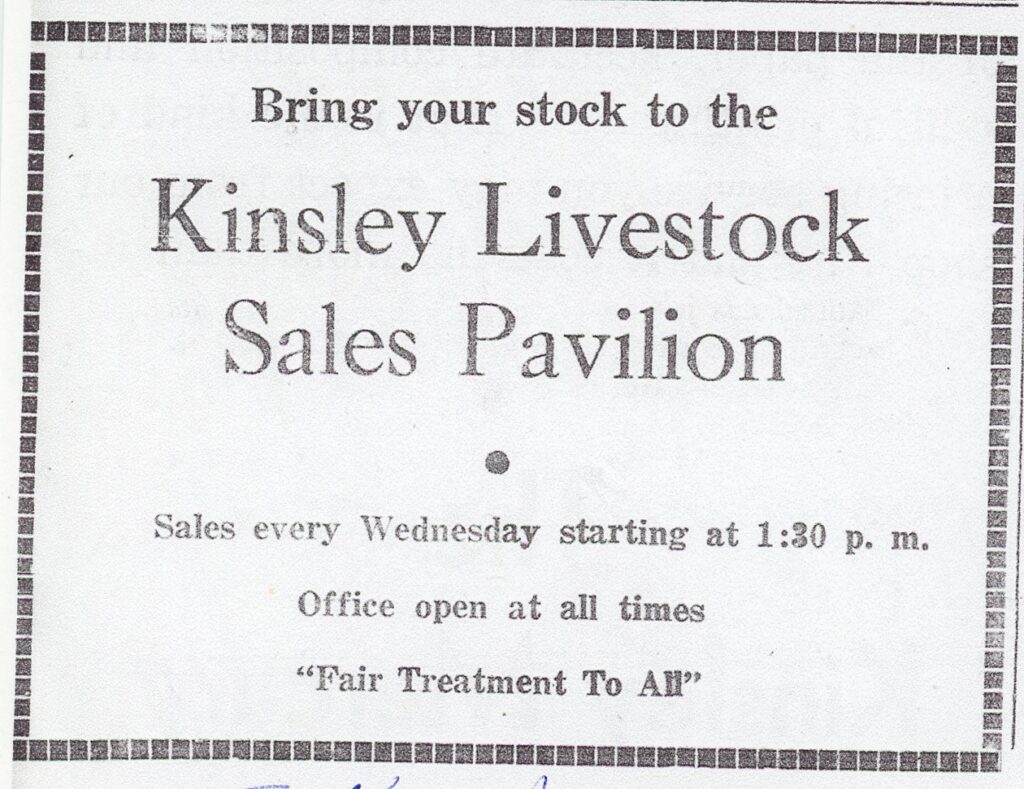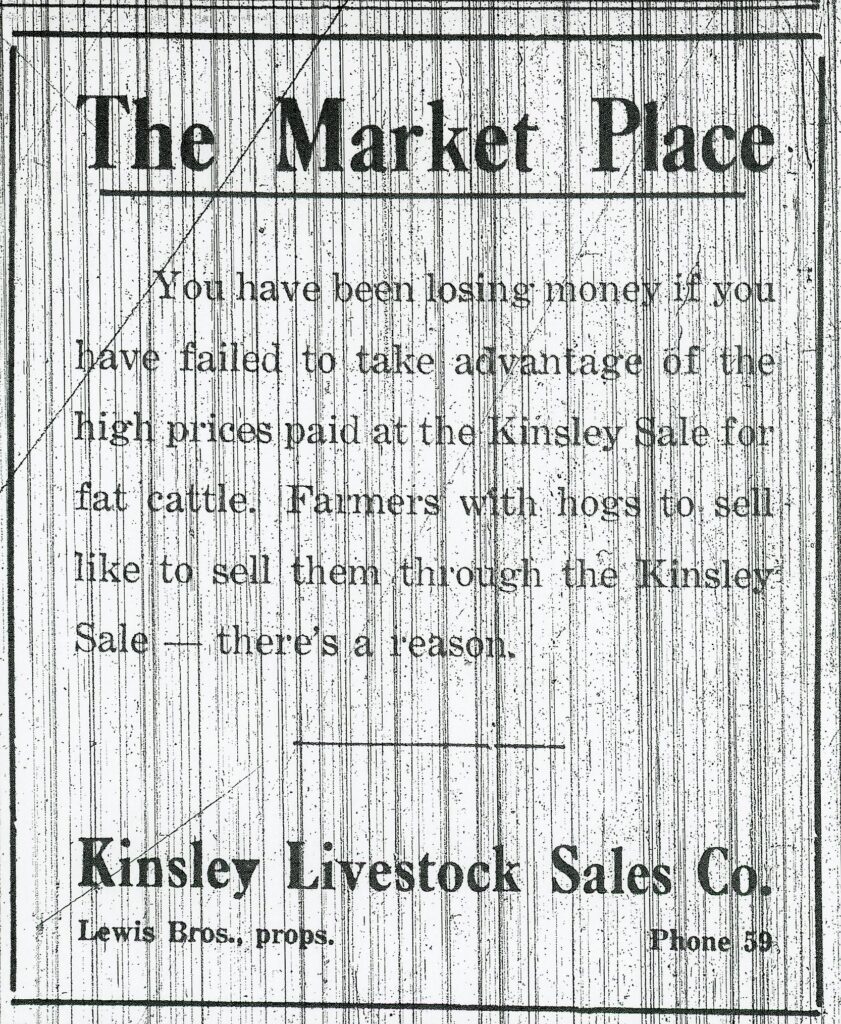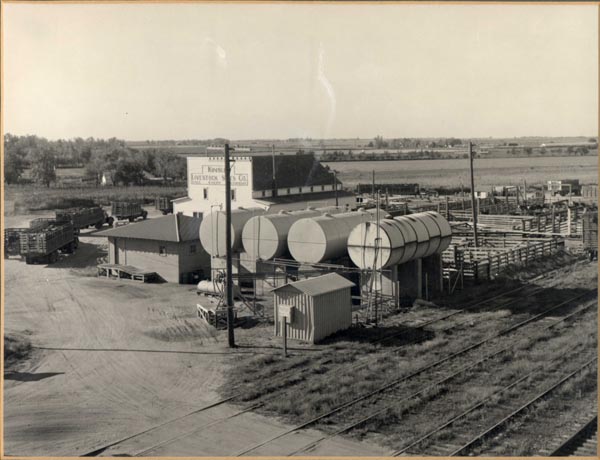I spent much of the weekend working on an exciting archival project which I’ll be telling you about in a future article. So with my limited time, I went to our vertical files and pulled out the folder on the Kinsley Sales Pavilion (livestock sale barn) for this week’s article. I’m hoping if it brings back more information, pictures, memories or stories about the sales barn, you will contact the library and share them for our files.
Before the sales barn, there was a stock yard located east of the VFW and on the south side of the railroad tracks. Livestock was loaded and unloaded on the train there.
In August of 1933, the Edwards County Shippers Association met with local business men to talk about raising money to build a livestock sales barn. Shares were to be sold and then bought back with interest. To encourage attendance, the association provided dinner and music by Pete Riisoe and Ed Lyman before the meeting.
Leo Craft chaired the meeting and Earl Ehlers told of visiting a sale in Bucklin and seeing how it benefitted the town. Harold G. Britton also visited a sale in Anthony, and he described what a success it was for the town and merchants.
The Shippers Association already had a contract with the Santa Fe Railroad for a site just east of the stockyards. The plan of the pavilion was to be 44’ by 50’, to seat 500 people and to have 28 pens, part of them being 8’ X 16’ and part 16’ X 16’.
In December, 1933 the association was making a final push to raise funds to build the pavilion. Time did not allow me to go through the papers to see how the shares were sold or not. One way or another, Hugh Miller and Ed Lippoldt did build the Kinsley Sales Pavilion beside the stockyards and opened it on December 27, 1934. These two men were described in a Kinsley Graphic article (Dec. 20, 1034) as knowledgeable livestock men and “live wires”.
This was the biggest business enterprise that had happened in Kinsley in a long time probably due to the Depression and Dust Bowl.
Their building was 48’ by 60’ with a gravel sales ring 30’ by 40’. It could seat 700 people and offered a lunch room and ladies restroom. Forty new pens were built with an alley leading into the sales ring.

I’m not sure when, but sometime, maybe in 1939 or 1940, W. R. Weigand, who had worked with his father at the sales barn in LaCrosse, ran the sales barn here for a short time. He did have to close it because there was a lack of feed in the county.
Then with the backing of 43 Kinsley businesses, Weigand leased and reopened the pavilion on Saturday, November 30, 1940. On that day, everyone selling or purchasing animals was given a chance to win a free calf. The Kinsley Chamber of Commerce offered free coffee.

By 1946 Bert and Buck Lewis had bought the business which was now called the Kinsley Livestock Sales Co. They ran it for 10 years when E. H. Snyder of Pratt and Russell Wilkey of Sterling bought it in 1956.

owned the sale barn. (Picture credit: Mike Lewis)
On January 21, 1960 the Kinsley Mercury featured the business, being run at the time by Rick Snyder, as “one of Kinsley’s most valuable assets and is of real service to the farmers of this area. This business provides an outlet as well as a supply for the livestock men of a large area and weekly attracts a large number of buyers from over the state of Kansas as well as the adjoining states.”
Snyder and Wilkey had the business for six years until the first week of August, 1962, when they announced that it was closing until further notice. After that, I believe ranchers and farmers went to the sales barns in nearby Dodge City or Pratt.
That is the information I gleaned from the library file and a very little research. It also gets us to a time when some people will remember going to the sales barn. If you can add to our information or have pictures or stories, I hope you will contact the library so we can add it to the file.
